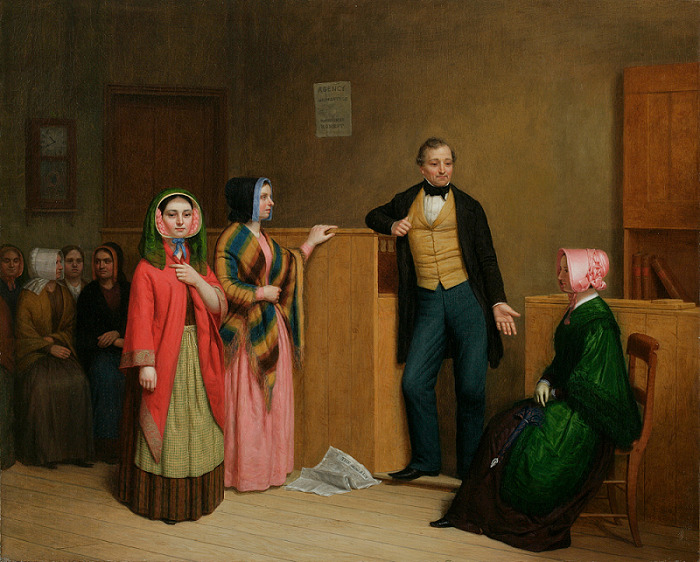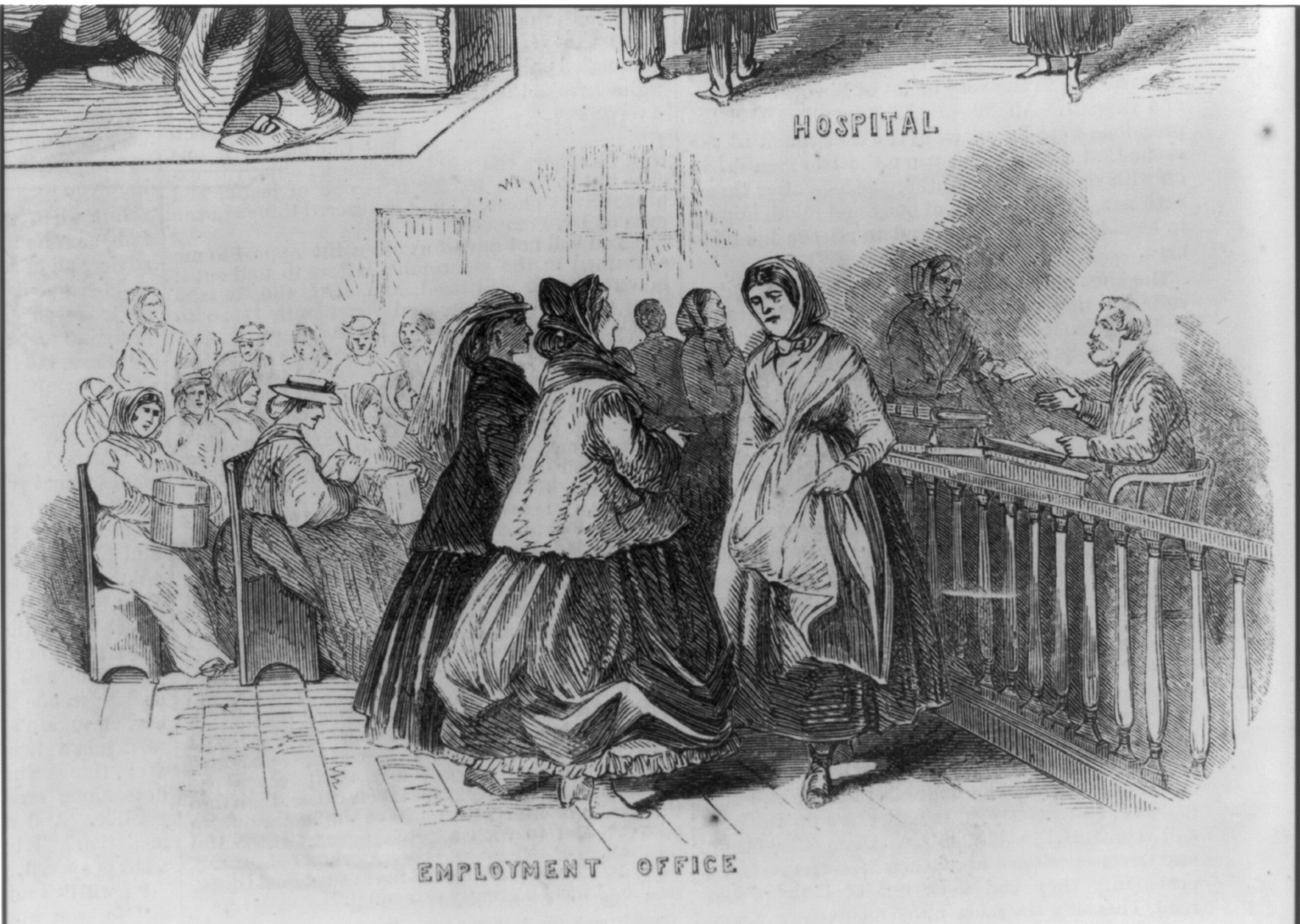Background
Between 1820 and 1860, approximately 1.65 million Irish people immigrated to the United States hoping to find prosperity in a new country, far from the famine and poverty that plagued their homeland. More than half of these immigrants were women. Many of these women were single and traveling alone in the hopes that they could start a new life.
Once in America, Irish women sought jobs that would allow them to support themselves and send money home to their families in Ireland. The vast majority chose to work as domestic servants. Working class women born and raised in the United States preferred to work in factories because they thought that working as a servant was demeaning, so employers had a hard time filling positions. Irish women did not have the same negative associations with domestic work. They quickly realized that they could ask for higher wages from desperate employers. It was also easy to find a new job if their current employer was not treating them fairly, because there was always another employer desperate for a hard worker. In this way, Irish women were able to assert a level of independence and control over their livelihood that many other women struggled to achieve.
About the Document
These two images show the contrasting views of Irish domestic servants in the U.S. Both illustrate Irish women who are looking for a new job at an employment agency. In The Intelligence Office, the Irish women being interviewed are portrayed sympathetically. They are both neatly dressed, and the woman looking at the viewer is strikingly pretty. Some art historians believe that the red shawl in the picture is meant to hint at dangers these women face if they do not find a job. The color red was closely associated with sex workers in the 1800s. By including a red shawl, the artist might be implying that if this woman is not hired, she will have to become a sex worker.
By contrast, the job seeker in The Employment Office is drawn with all of the harmful stereotypes that many Americans believed about Irish women. Her face is broad and unattractive, and her expression is vacant, implying that she is not intelligent. Many Americans looked down on Irish women as uneducated and regretted that they had to hire them to work in their homes.
These are just two of hundreds of drawings, cartoons, paintings, and other works of art that portray Irish domestic servants. The popularity of Irish domestic servants as subjects for 1800s art confirms their importance in U.S. society and the economy.
Vocabulary
- domestic servant: A person who cooks, cleans, and performs other household chores.
- employment agency: A place where employers could pay a fee to meet many people looking for domestic work at the same time.
Discussion Questions
- Who is the figure of power in these two scenes? What does that say about the way Irish domestic servants were treated in the 1800s?
- Why are the domestic servants in these two images portrayed so differently? What do their portrayals reveal about attitudes toward Irish women in the 1800s?
- How would you feel if you were the servant in either of these scenes?
Suggested Activities
- Use these images when talking about Irish immigration to introduce students to the opportunities and challenges Irish women faced in the U.S.
- To help students understand the rising tide of anti-Irish sentiment, see Nativism.
- Teach this image together with Home Improvements for a larger lesson about the experiences of women who worked as domestic servants.
- For a different story of an Irish immigrant woman from this era, see Life Story: Margaret Haughery.
- Irish domestic servants understood their power in the American economy. To learn about how they organized to demand better pay and working conditions, see Irish Domestic Workers.
Themes
IMMIGRATION, MIGRATION, SETTLEMENT








